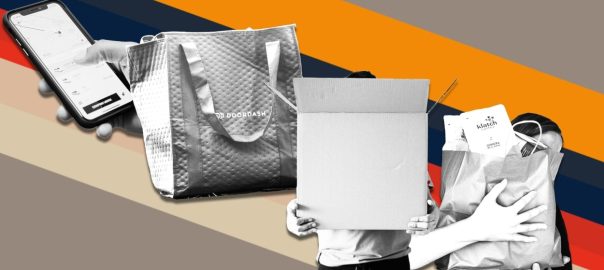Gig companies have finally moved past the initial COVID-19 challenges. This month’s second-quarter earnings report from Uber shows that rides have picked back up from pandemic levels in the U.S. market, while DoorDash’s financial results indicate food delivery is here to stay.
Now, gig companies need to show they can sustain that growth against a backdrop of economic uncertainty, and continue to be profitable businesses (or, in DoorDash’s case, continue on a path toward profitability).
“The key [Wall] Street focus is the growth trajectory post-COVID while becoming a sustainable, profitable business mode,” Wedbush analyst Dan Ives tells Fast Company in an email.
Uber was posting huge losses when it went public in 2019, but investors were excited at the opportunity to get in on a growing segment and saw a promising path to profitability. Uber’s CEO Dara Khosrowshahi even suggested that same year that his company could become the next Amazon.
Of course, the idea that consumers would be taking rides everywhere proved to be much more difficult than anticipated. Operating a gig business is expensive. And then, people across the globe hunkered down when COVID hit less than a year later, so the need for rides to work or social events dwindled. Everything became about recovery.
To its credit, Uber was able to grow out its delivery business, Uber Eats, in an attempt to make up for rideshare losses. (Its main rival, Lyft, however, continued to focus solely on rides, and had an even rockier time after its 2019 IPO.) DoorDash went public at a time when delivery was hotter than ever, in December 2020, though it was still losing money. When masks came off and vaccines were released, investors became nervous that people would stop ordering in.
We’ve seen, though, with Uber, DoorDash, and Lyft’s most recent earnings reports that rideshare and food delivery is here to stay, even as Americans tighten their spending amid rocky economic conditions.
“DoorDash is becoming more of a habit and a utility than most people think,” DoorDash CFO Ravi Inukonda tells Fast Company. Consumers are also turning to DoorDash for delivery on things like groceries, office supplies, and flowers.
The company’s second-quarter sales jumped to a quarterly high, while revenue gained 33% from the same quarter a year ago to $2.13 billion. Analysts were expecting sales of $2.06 billion. It reported a net loss of $172 million, better than the $263 million posted the same quarter a year ago.
Uber, meanwhile, reported its first-ever operating profit, as rides in the U.S. and Canada surpassed pre-pandemic levels for the first time, and consumers continued to order in.
“For most of our history, profitable wasn’t the first thing that came up when you asked someone about Uber,” Khosrowshahi said on a call with investors earlier this month.
Lyft has been on a turnaround mission. The company announced a new CEO earlier in the year, and it’s been shedding certain operations and focusing on new driver and rider features. It’s still losing money but said that, in its second quarter, the company experienced its highest levels of active riders since the start of the pandemic. It’s been able to take back some of the market it lost to competitor Uber, according to YipitData metrics cited by the Wall Street Journal.
The results have shown that there’s growth so far in rideshare as a whole and have been encouraging to investors, Wedbush analysts said in a research note.
Uber’s mobility gross bookings growth and DoorDash’s gross order-volume growth are bright spots in the businesses that show these scaled players are still growth businesses, Bernstein analyst Nikhil Devnani says in an email. He adds that improving profitability is also coming “to fruition” at Uber and DoorDash “as competitive intensity improves and the incremental margins on the growth is healthy.”
But can that continue? “Growth remains the lingering worry and gig players striking that tightwire balancing act is the key heading into 2024,” Ives says.
Roadblocks may still be in the way. Uber and Lyft face continued pressure over legislation on whether they have to consider workers as independent contractors or employees, as well as a bill in New York that would require paying workers a minimum rate. Student loan repayments are also set to resume soon, which could impact Uber Eats orders, Third Bridge analyst Nicholas Cauley said in a statement. DoorDash, he said, could bypass that issue since it “continues to lead the category in affordability and SNAP/EBT benefits can now be spent on the platform.”
Still, it’s hard for the gig sector not to be encouraged by the second-quarter results. It seems to have finally rebounded from its pandemic slump—hopefully, once and for all.
(11)
Report Post









